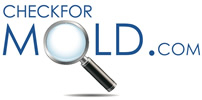
Health Effects of Mold
What are the Health Effects of Mold?
What are common mold exposure symptoms?
Exposure to mold can produce adverse health effects through inflammation, allergy, or infection. Allergic reactions (often referred to as hay fever) are most common following mold exposure. Typical symptoms that mold-exposed persons report (alone or in combination) include: Respiratory problems, such as wheezing, difficulty breathing, and shortness of breath nasal and sinus congestion
- Eye irritation (burning, watery, or reddened eyes)
- Dry, hacking cough
- Nose or throat irritation
- Skin rashes or irritation Headaches, memory problems, mood swings, nosebleeds, body aches and pains, and fevers are occasionally reported in mold cases, but their cause is not understood.
How much mold can make me sick?
It depends. For some people, a relatively small number of mold spores can trigger an asthma attack or lead to other health problems. For other persons, symptoms may occur only when exposure levels are much higher. Nonetheless, indoor mold growth is unsanitary and undesirable. Basically, if you can see or smell mold inside your home, take steps to identify and eliminate the excess moisture , cleanup and remove the mold immediately.
Are some molds more hazardous than others?
Allergic persons vary in their sensitivities to mold, both as to the amount and the types to which they react. In addition to it's allergenic potential, mold produces mycotoxins. Mycotoxins are chemicals, which are produced as mold grows and colonizes. The mycotoxins associated with Stachybotrys Chartarum, also known as Black Mold or Toxic Black Mold, have been linked to serious human illness and disease. We have a long standing relationship with Real Time Labs, which is one of a few labs in the U.S. that does mycotoxin testing.
Who is at greater risk when exposed to mold?
Exposure to mold is not healthy for anyone inside buildings. Therefore, it is always best to identify and correct high moisture conditions quickly before mold grows and health problems develop. Some people may have more severe symptoms or become ill more rapidly than others:
- Individuals with existing respiratory conditions, such as allergies, chemical sensitivities, or asthma.
- Persons with weakened immune systems (such as people with HIV infection, cancer chemotherapy patients, and so forth)
- Infants and young children
- The elderly